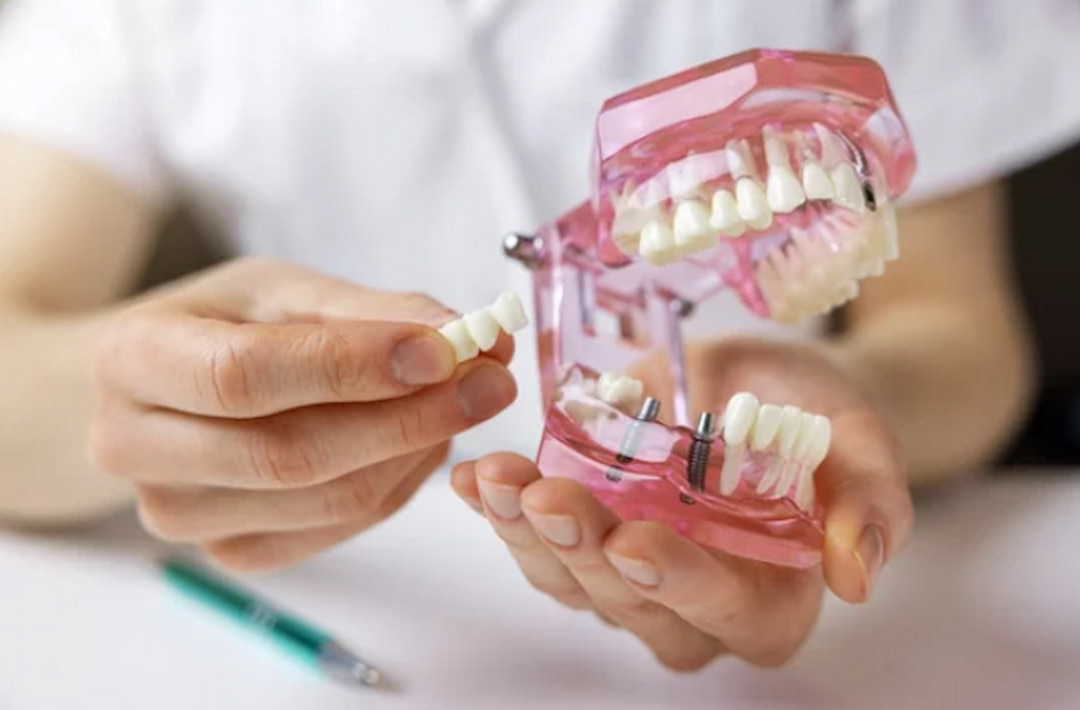
Our smiles are something that we are eventually known for, especially in the professional world. Having a less-than-ideal smile can add a significant amount of anxiety to even the most positive individuals. This has had several different solutions over the years, and one of the newest and most popular methods is to use dental implants.
These implants can make bad teeth a thing of the past. They are designed to be installed in nearly any mouth, resulting in a very attractive and convenient way to replace teeth. They can be used in place of a single tooth, or they can be used to replace a whole mouthful of badly damaged teeth.
But, what are you supposed to do when one of your implants breaks or comes loose of the anchor point. In situations like this, you will probably make an emergency appointment to get the issue fixed, but then you’ll have to deal with the bill. Who exactly is responsible for a dental implant failure, and how can you tell?
What Is A Dental Implant?
A dental implant is a relatively simple device. The dental implant is a metal post that is attached to and anchored in the jaw. This post will be the location of a tooth implant in the future. The new tooth will simply screw down onto the post and will function just like a natural tooth.
They are commonly used for applications and patients that need more consistent performance and minimal maintenance requirements than alternatives like dentures or veneers can provide. The surgeries for installation are relatively complicated and require sufficient bone to anchor the implants.

Who Is Ultimately Responsible For Dental Implant Failure
There are two general categories of bone implant failure. The first is a category of failures due to the malpractice or incompetence of the installer. The second is all other failures, some can be from patient action or inaction, while some may just be environmental factors.
Failures That May Indicate Dental Malpractice
If you use underqualified personnel or facilities you may find that your dental implant suffers a premature failure. This may also happen in some circumstances where more serious malpractice has occurred. Some of the causes of dental implant failure most commonly attributed to dental malpractice can include:
- Initial misdiagnosis, which leads to incorrect assessments and mistreatments of the patient
- Failing to detail all risks and benefits associated with the procedure to the patient, and to get their informed consent
- Failure to take and properly understand the patient’s proper medical history can hide pre-existing conditions
- Administering an incorrect dose of medication or antibiotics
- Not using completely sterilized tools
- Failing to schedule follow-up appointments
Causes Of Dental Implant Failure From Other Sources
While there are some instances where dental malpractice causes the surgery to fail, this isn’t the cause in all cases. Even in situations where the dentist used appropriate levels of care, other factors significantly increase the risk of a dental implant failure. These causes can include:
- Having gum disease
- Bacterial Infection
- Failing to have the patient participate in smoking cessation before, and following the procedure
- Being a smoker, smokers have a much higher potential for failure than non-smokers
- Insufficient areas of jaw bone to anchor the implant posts, often from degenerative conditions
- Taking certain medications that have been shown to inhibit or otherwise reduce bone regrowth
- Failure to maintain proper hygiene or prescribed care, after the procedure
- Not having proper radiological studies done
- Not giving the grafted bone enough time to reach various healing milestones before loading the implants
- Constant grinding of the teeth, or bruxism, can also lead to implant failure

How To Recognize Dental Implant Failure
When the implants are placed, they rely on a process known as osseointegration to anchor them and keep them in place. Full osseointegration can take years, which means it can also be difficult to see implant failures before they completely fail. Without full osseointegration, the implant cannot have long-term success at any level. Some of the most common signs that a dental implant is failing include:
- Dental crowns or implants that have become mobile
- Intense, severe pain when chewing food
- Inflammation or swelling of the gum tissue
- Gum recession and gum tissue loss
- Bleeding
Do Your Part To Prevent Premature Dental Implant Failure
Even though it may seem like there are a lot of ways for a dental implant to fail, even when expertly installed, there are some things that you can do ahead of time to minimize risk and increase the chances of a successful implant. Here are some things you can do to lower the risk of failure.
Quitting Smoking
Smokers have a higher overall risk of implant failure, due to tobacco’s significant effect on oral blood flow. Quitting smoking before your implants or even after they’re installed, can dramatically reduce those risks.
Practice Better Oral Hygiene
A history of periodontal disease can raise the chances of an unsuccessful implant. Not only is bone density affected, but gum health also takes a big hit. For full osseointegration, your mouth will need to have impeccable hygiene and routine dental checkups.
Be Thorough In Your Medical History
Any surprises in your history could be cause for an unsuccessful or ineffective implant. This can be anything from diabetes, to cancer, or rare immune deficiencies.
Keep Your Appointments
If you have recently obtained dental implants, your dentist or oral care professional should have also had you schedule follow-up appointments. These appointments are to make sure that your bone is healing and the osseointegration is happening as planned. Keep your appointments, and mention anything out of the ordinary so that if there is a problem it can be identified quickly.

An Easy Alternative To Implant Use
If you were thinking about getting implants to have the whitest smile possible, there may be an easier way. Those who want whiter, brighter smiles don’t necessarily have to go through the stress and trauma of dental implants. Teeth whitening systems like Dr. Brite can help you get a healthy, white smile without spending thousands of dollars and dozens of hours of recovery from surgery.


I have dental implants. Am now waiting for my top teeth that will take 3 weeks that broke. Can’t wear my bottom teeth due to infection on my 2 implants on 1 side. I don’t have any teeth in my mouth. Suffering from my infection on my implants.